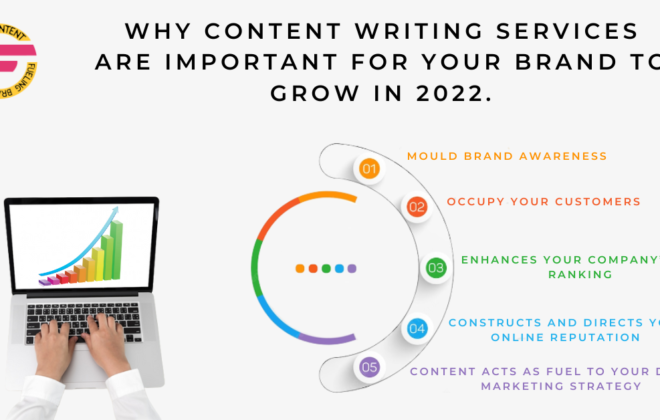4 Elements of a Blockbuster Brand Story
Introduction
What is a brand story?
A brand story means storytelling of a brand that connects with the audience on an emotional level and builds trust and loyalty. A good brand story is authentic, relatable, and memorable, and try making it clear, concise, and easy to understand for your audience.
Why is it important?
An Effective Brand story is important as It helps you connect with your audience on an emotional level. An effective Brand story allows us to share our experiences, learn from others, and feel empathy. It gives a sneak peek to your audience about your company’s values, mission, and vision building trust and loyalty with your customers.
It helps you stand out from the competition in today’s crowded marketplace, a good story can help you differentiate your brand from the competition and make your brand more memorable to the audience or the customers
A good brand story increases brand awareness, generates leads, and drives sales resulting in more sales. When your brand connects with the customer emotionally they will most likely buy from you.
For Example, Nike’s brand story is about empowering athletes to achieve their goals. The company’s “Just Do It” tagline is a call to action that inspires people to push themselves to be the best they can be.
What are the 4 elements of a blockbuster brand story?
- A clear and compelling message
- A relatable protagonist
- A plot that keeps readers engaged
- A satisfying ending
Body
A clear and compelling message
Crafting a creative brand story needs to have a strong message that is appealing to your target market. People should be able to understand and recall this message with ease. Additionally, it must be something to which they can emotionally relate.
Here are some tips for crafting a clear and compelling message for your brand story:
Start by identifying your target audience. To whom are you hoping your brand story will appeal? What are the people’s wants and needs?
What does your brand’s main message consist of? After hearing your story, what do you want listeners to recall about your brand?
Keep it short and simple when communicating. In a few seconds, people should be able to comprehend your message.
Bring your message to life by using vivid language and imagery. Help people understand your ideas by providing examples.
Use language that is appropriate for your target audience when telling your story. Ensure that your tale speaks to their interests and needs.
A relatable protagonist
The protagonist of your brand story is the character that your audience will try to see themself in the character and relate with. It’s important to make this character someone they can root for and care about.
There are a few considerations when making the protagonist relatable to your audience.
The character must, firstly, be someone with whom your target audience can identify. They ought to share the same fears, aspirations, and hopes as your audience.
Second, the character ought to be someone who closely resembles the audience in terms of personality. They should be likable even if they make mistakes.
Thirdly, they should be someone that your audience has no trouble visualizing.
Here is an example of relatable protagonists from popular brand stories:
Harry Potter from the Harry Potter series is a relatable protagonist because he is an orphan who is trying to find his place in the world. He is also a talented wizard who is trying to overcome the evil Lord Voldemort.
A plot that is full of conflict and resolution
A good brand story has a plot that is full of conflict and resolution. This conflict should be something that the protagonist must overcome in order to achieve their goals. The resolution should be something that is satisfying and leaves the audience feeling good.
A conflict is what makes a story interesting. It is what drives the plot forward and keeps the audience engaged. Without conflict, a story would be boring and predictable.
Conflict can take many different forms and be used in brand stories.
Internal conflict is a struggle the protagonist has with themselves. A conflict between the protagonist’s desires or between their beliefs and their desires could exist. An external force and the protagonist are at odds in an external conflict. A person, a group of people, or even an inanimate object can be this force.
The conflict in a brand story should be something that the protagonist can overcome. This will make the story more satisfying for the audience. The resolution should be something that is believable and satisfying. It should leave the audience feeling good about the protagonist and their journey.
Here are a few examples of plots with conflict and resolution from popular brand stories:
In the Hunger Games books and movies, Katniss Everdeen deals with the conflict of the Hunger Games which is a bloody event where kids are made to compete to the death. By utilizing her abilities and forming alliances with other competitors, Katniss triumphs over this conflict.
Here are a few tips for creating a plot with conflict and resolution:
- Make sure the conflict is something that the protagonist can overcome.
- Make the resolution believable and satisfying.
- Leave the audience feeling good about the protagonist and their journey.
A memorable ending
Your brand story should come to a memorable conclusion that piques the audience’s interest. Long after they have finished reading or watching it, they should be left with something to reflect on.
A successful brand story must have a memorable conclusion. The likelihood that someone will remember the brand associated with a story increases when they can recall the ending. Making an ending that leaves the audience thinking is essential for this reason.
The conclusion should, first and foremost, make sense in the context of the entire story. It should not be shocking or unanticipated by the audience.
It should also be satisfying and ought to provide a sense of closure for the audience and leave them satisfied with the tale. Finally, the conclusion ought to provoke thought. Long after they have finished reading or watching it, it should continue to occupy the audience’s thoughts.
Brand Storytelling: 5 Key Brand Attributes
Incorporate your brand’s 5 key attributes into your brand storytelling to maximize your marketing impact.
- Brand voice. What language does your brand use? Is it casual or formal?
- Brand tone. What emotions does your brand portray? How does your audience understand that they’re key to your brand?
- Perspective. How do you tell your story for maximum impact? Stories are often told in a formal third person or less formal first person. Many online writers address their audience in the second person (aka you).
- Language. What words do your readers use? What images do these words evoke?
- Personality. How do the words and sentence construction convey your brand’s personality?
Here are some Statistics on the topic
90% of consumers claim that the backstory of a brand influences their choice.
Consumers are 70% more likely to make a purchase from a company that has a compelling narrative.
In order to get a product or service from a company with a compelling story, 50% of consumers are willing to pay more.
30% of consumers claim that a brand’s origin story has positively impacted their perception of the company.
Conclusion
Brand storytelling sets your business apart and makes it memorable. In the process, it contributes to building your brand to make it stand out.
More importantly for today’s distracted audience, brand stories pull your potential audience into your marketing.
Integrating stories into your marketing to add personality and details that your target audience needs to capture their attention.
Don’t feel locked into a linear plot line. Instead, tap into interactive and multi-channel options to enhance your brand approach.
The key to brand storytelling is to set your brand apart by infusing your story with brand elements that hook your reader into consuming it.





